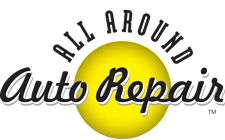Inside every automobile you can find a number of complex systems and components that all play critical roles in the way the vehicle functions. Having a deep understanding of how these systems work may be too far fetched and vehicular problems might seem chaotic for many. Scheduling regular car repair and maintenance are ways to ensure your vehicle remains in excellent working condition and you in high spirits.
 Car Repair Tips For All You Cautious Drivers Out There
Car Repair Tips For All You Cautious Drivers Out There
Despite this there are some instances when drivers may experience several issues with their vehicle due to age or wear and tear. This can be time consuming and expensive therefore it’s critical for drivers to be able to recognize the different signs that can lead to problems and address them right away.
When driving a vehicle daily it should be pretty easy to realize when something is not right. Maybe a weird sound or smell or sometimes your vehicle may even stall but whatever the issue, there are several tell tale signs that will indicate to you that your car may definitely be in need of repair.
Another common problem drivers experience with vehicles is the overheating of the engine. In most automobiles the engine is designed to function with a normal temperature of 195 to 220 fahrenheit. Maintaining this temperature is important if the vehicle is to have proper emission control, efficient fuel consumption and exceptional performance overall.
If for some reason this temperature cannot be maintained and the engine runs hotter than usual this will eventually lead to the overheating of your engine. There are several things that can cause this and these include coolant leaks, poor heat conductivity, a collapsed radiator hose or a defective radiator cover. By identifying issues and getting them repaired before they get out of control is the only way to prevent such experiences.
There are a few insightful tips that can help drivers to determine if their vehicle is overheating. These include:
-
Check the vehicle’s thermostat – Extreme overheating can cause substantial damage to a vehicle’s thermostat. So by starting the engine and using an infrared non-contact thermometer drivers can get a reading of what temperature their vehicle’s thermostat is producing. If the reading is beyond the normal range of 195- 220 fahrenheit this indicates overheating and is a signal for prompt repair.
-
Check for cooling system leaks – One of the main causes of an overheating engine is the loss of coolant due to a leak. Leaks can be a result of aged, damaged or faulty hoses and can occur in several different areas of the cooling system such as the radiator, thermostat housing, heater core, freeze plugs and head gasket. Sometimes a leak may be difficult to detect but running a pressure test can easily reveal the affected area.
These important and informative tips offer a first hand insight as to what drivers should look for. For most drivers engine inspection and maintenance are typically performed when needed however it is recommended that this be conducted just as regular as when you get an oil change.
You may not always have the time or cash to spare nevertheless get your vehicle diagnosed and repaired promptly as it can save you from spending more in the future as well as to put your mind at ease while driving. Contact us for more information.

 Car Repair Tips For All You Cautious Drivers Out There
Car Repair Tips For All You Cautious Drivers Out There